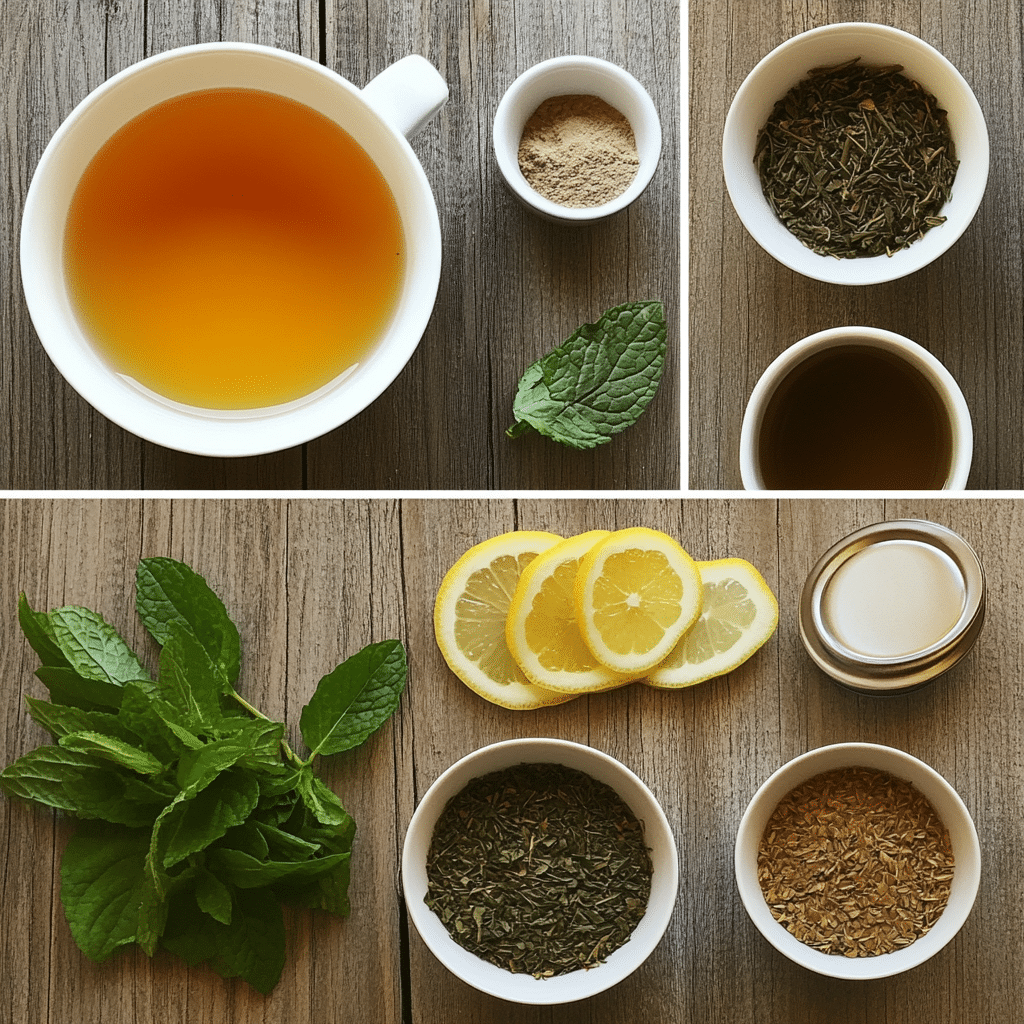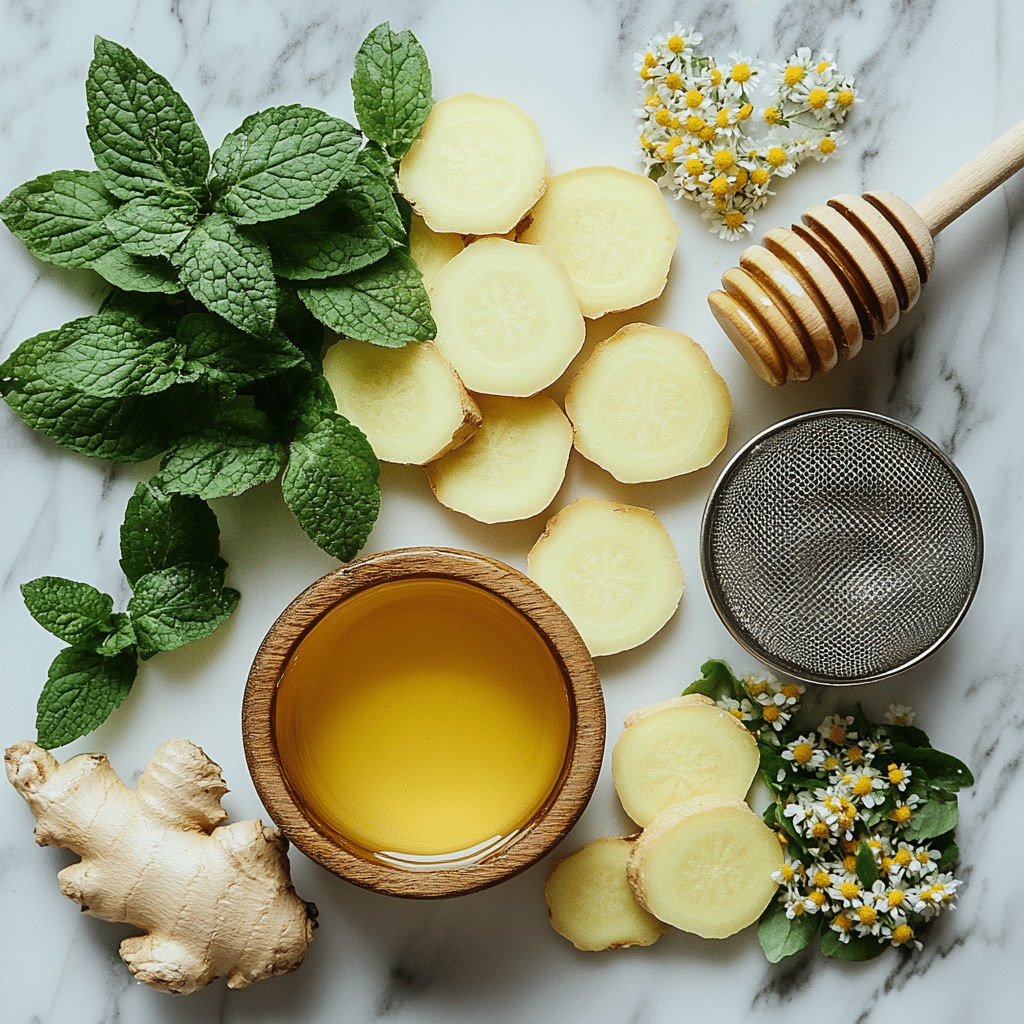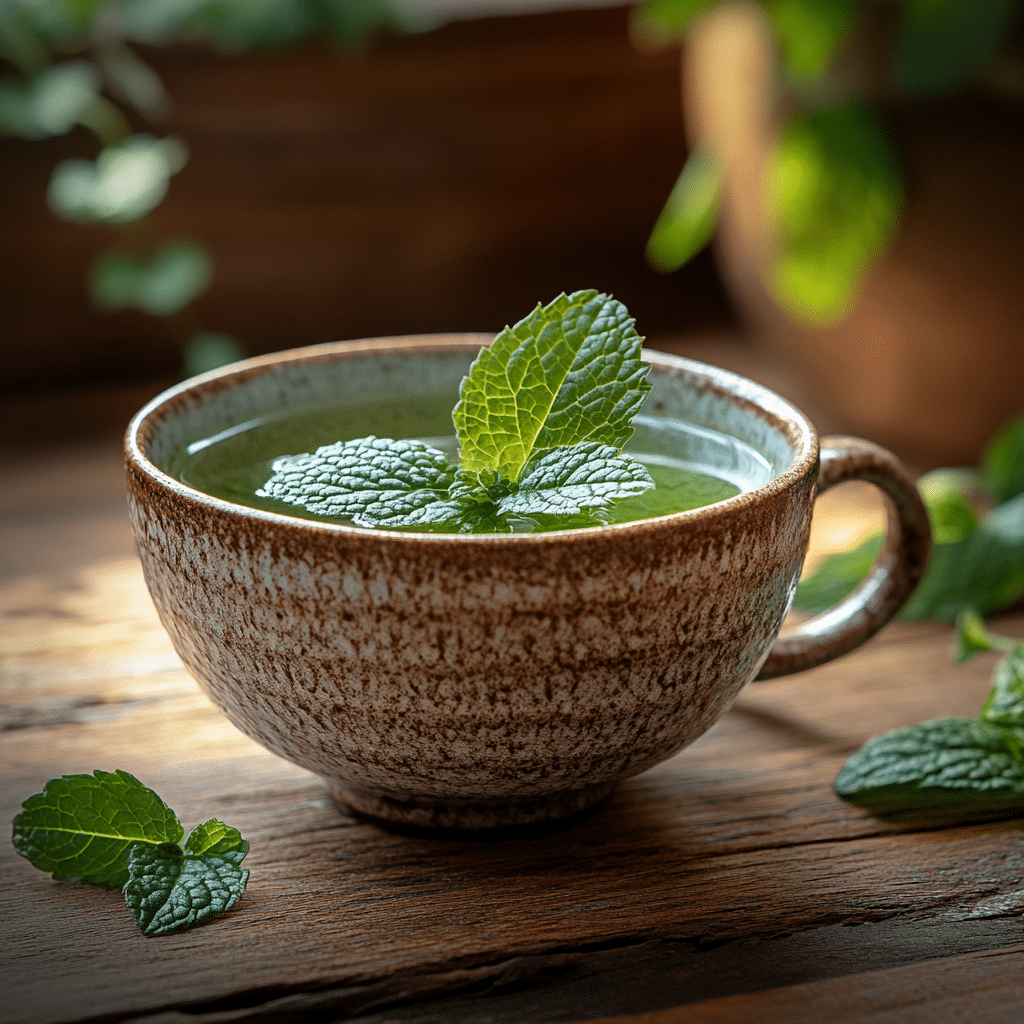Introduction
How to make lemon balm is more than just a simple recipe—it’s a way to bring calm, balance, and natural energy into your daily routine. This herb has been used for centuries to soothe digestion, reduce stress, and refresh the senses. In this guide, you’ll learn how to prepare lemon balm in a few different ways that are easy, flavorful, and effective. We’ll begin with a personal story that shows how this herb became a key part of my wellness habits. If you’re curious about gentle, herbal remedies, this is the perfect place to start.

How to Make Lemon Balm: Naturally Calm Stress, Cravings & Digestion
Ingredients
Method
- 1. Rinse lemon balm leaves gently under cool water.
- 2. Boil 1½ cups of filtered water in a kettle or saucepan.
- 3. Remove from heat and add lemon balm leaves.
- 4. Cover and let steep for 10–15 minutes.
- 5. Strain the leaves and pour into your favorite mug.
- 6. Add honey or lemon if desired and enjoy warm or iced.
Nutrition
Notes
Tried this recipe?
Let us know how it was!My Lemon Balm Story & Why It Matters
Discovering lemon balm’s soothing magic
I first learned how to make lemon balm when I was just a kid in my grandmother’s garden. She had this lush patch of lemon-scented leaves that smelled like sunshine. One day, she brewed a tea from them and said, “Drink this—nature knows how to calm us better than anything in a bottle.” I remember sipping that warm, citrusy cup and feeling my tension melt away. It wasn’t just tea—it was peace. That moment changed how I thought about wellness and plants.
Since then, learning how to make lemon balm in different forms became a quiet obsession. I started making teas to ease digestion after meals and infusions to help me sleep. Over time, I created simple routines that blended this herb with ginger, mint, and even matcha. It’s gentle yet powerful, and once you experience it, you’ll understand why herbalists love it so much.
Why It Became My Daily Ritual
Most nights, I end the day with a warm mug of lemon balm tea. It’s my way to reset. I’ve even developed custom versions like this lemon balm ozempic recipe and this lemon balm weight loss tea that support digestion and curb cravings.
Knowing how to make lemon balm at home has helped me feel more in control of my health. It’s not complicated—it’s comforting. And honestly, there’s something satisfying about picking a few leaves, brewing a cup, and feeling better without needing anything artificial. Once you know how to make lemon balm part of your routine, you’ll never want to go without it.
How to Make Lemon Balm Tea (Simple Steps & Variations)
Start with Fresh or Dried Lemon Balm Leaves

Once I learned how to make lemon balm tea the right way, it became a staple in my wellness lineup. Begin by picking a small handful of fresh lemon balm leaves—about 10 to 12—or use 1 tablespoon of dried lemon balm. Give the leaves a quick rinse to remove any dirt or residue. If you’re harvesting from your garden, morning is the best time for peak flavor.
Bring 1½ cups of filtered water to a gentle boil. Remove the pot from heat, toss in the lemon balm, cover with a lid, and steep for 10–15 minutes. Covering it helps preserve the essential oils, which are key to the calming effect. After steeping, strain into a mug and enjoy as is—or add a bit of honey or lemon if you like a sweet touch.
For a digestion boost, blend in fresh ginger slices or combine it with peppermint. For a refreshing iced version, chill it and serve over ice with cucumber and mint, like I did in this lemon balm digestion recipe. You can even prep a week’s supply by steeping a large batch and storing it in the fridge.
Upgrade It with Functional Add-ins
Want a power-packed version? Try infusing lemon balm with green tea for focus or as a base for a matcha-chia pudding. It’s perfect for mornings when you want clarity without the jitters. This approach to how to make lemon balm adds variety and function without extra effort.
Knowing how to make lemon balm tea in multiple ways lets you adapt it to your goals—whether that’s calming down, aiding digestion, or powering up your day. It’s one herb, endless benefits.
Lemon Balm Benefits for Wellness and Weight
Calm Cravings, Naturally
When people ask me why I stick with lemon balm, I always say—it helps me feel calm without slowing me down. One of the best things about learning how to make lemon balm tea is that it becomes a gentle way to regulate appetite and mood at the same time.
Lemon balm is naturally rich in rosmarinic acid and volatile oils that help calm the nervous system. This isn’t just feel-good fluff—science backs its ability to reduce anxiety and cortisol, which are both tied to emotional eating. When stress peaks, cravings spike. But a soothing cup of lemon balm can interrupt that cycle.
I often recommend my lemon balm weight loss recipe to anyone who struggles with nighttime snacking. It’s simple, flavorful, and curbs those late-night cravings without relying on willpower alone. And unlike sugary alternatives, lemon balm tea won’t spike your blood sugar or disrupt sleep.

Better Digestion, Better Energy
Another benefit you’ll notice once you know how to make lemon balm is improved digestion. Lemon balm relaxes the digestive tract and supports smoother, less bloated digestion after meals. Pair it with a touch of ginger or fennel and you’ve got yourself a bloat-fighting blend.
It also makes a great caffeine-free option when you need clarity and energy without a crash. I love using it as a base in this iced matcha latte recipe for an herbal twist on a classic superfood sip.
When you understand how to make lemon balm work for your body—not just your taste buds—you’ll see that it’s more than tea. It’s a wellness habit that supports calm, focus, and metabolism in one clean cup.
Creative Ways to Use Lemon Balm Daily
Infuse It Into Everyday Routines
Once you learn how to make lemon balm tea, you don’t have to stop there. This herb blends effortlessly into so many recipes. One of my favorite tricks? Use chilled lemon balm tea as the base for your morning smoothie. It’s light, hydrating, and adds a subtle citrus-mint flavor that works beautifully with greens, berries, or even protein powders.
For a fun twist, I pour it into ice cube trays and freeze it. Then I pop those into sparkling water with fresh lemon for a refreshing stress-busting mocktail. You can also blend lemon balm into your coffee loophole recipe for a relaxing counterbalance to caffeine’s intensity.

Add It to Recipes That Nourish and Delight
Knowing how to make lemon balm means you can integrate it into more than just drinks. Try steeping it and using the cooled liquid in overnight oats or light puddings. I love mixing it with almond milk and chia seeds for a calming snack that also supports digestion—especially helpful when blended with matcha like in this mango matcha chia pudding.
You can even stir finely chopped fresh lemon balm into your yogurt bowls or fruit salads. It’s especially delicious with strawberries or peaches, adding brightness without overpowering sweetness.
Once you see how easy it is to experiment, how to make lemon balm goes from being a one-off skill to a lifestyle habit. Whether you’re sipping, snacking, or stirring it into your meals, lemon balm becomes a way to weave calm energy into your day—without needing to overhaul your routine.
For more recipes follow our social media accounts :
On Pinterest : Dieteverytime
Frequently Asked Questions
1. What is the best way to use lemon balm daily?
The easiest and most effective way to use lemon balm daily is to drink it as a tea. Once you learn how to make lemon balm tea, you can enjoy it hot, iced, or blended with herbs like mint and ginger. You can also freeze it into cubes, add it to smoothies, or use it as a calming infusion in recipes like chia puddings or wellness lattes.
2. Can I use dried lemon balm instead of fresh?
Absolutely. If you don’t have fresh leaves on hand, dried lemon balm works just as well. Use about 1 tablespoon per cup of water and steep for 10–15 minutes. Whether you’re learning how to make lemon balm tea or infusions, the dried version is convenient and shelf-stable.
3. Does lemon balm help with weight loss?
Yes, lemon balm can support weight loss by reducing stress, aiding digestion, and calming emotional cravings. Many people drink lemon balm tea before meals or in the evening to curb late-night snacking. Try this lemon balm weight loss tea as part of your daily routine.
4. Can you mix lemon balm with other herbs?
Definitely! Lemon balm pairs well with herbs like chamomile, lavender, ginger, peppermint, and matcha. Combining herbs not only enhances flavor but can boost the calming, digestive, or energizing effects depending on your needs. For inspiration, check out this lemon balm tea variation.
Conclusion
Learning how to make lemon balm isn’t just about preparing a soothing cup of tea—it’s about creating a simple, nourishing ritual that fits into real life. Whether you’re calming digestion, reducing stress, or replacing artificial supplements with something cleaner, lemon balm delivers.
This herb is versatile, easy to work with, and incredibly effective. From iced teas and lattes to infused snacks and smoothies, it gives you endless ways to support your body and mind—naturally. If you’re ready to feel more balanced and energized without extra effort, knowing how to make lemon balm is your perfect starting point.


7 thoughts on “How to Make Lemon Balm: Naturally Calm Stress, Cravings & Digestion”